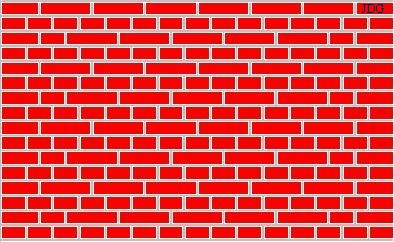Stone walls
A stone wall has the thickness of the length of the stone.
There is no cavity present.
Especially still found in older homes and buildings, as well as in historic buildings.
What wall thickness do you see in the video, and can you give further explanation of this?
> In the case of a half-stone wall, the stones are laid longitudinally.
> The wall is half a brick thick.
> With a stone wall, the wall is a whole brick thick.
> For a good bandage, alternately brick heads and stretches around.
> For walls in cross bandage and standing bandage.
> These are not bricked much more in today’s construction because they are too expensive.
> Are still applied in foundation masonry.
> You can apply a stone wall with facing brick, quick build bricks and concrete blocks.
> Apart from the stone wall, there are also the one-and-half stone wall and the two-stone wall.
>The latter 2 have all but disappeared from the construction industry, industry, mainly due to the advent of cavity wall and their excessive cost.
* Continuous wall:
>Also with this stone walls, the continuous layer is the so-called building building line. The wall coming up against is the oncoming wall.
* Stone wall in cross bond:
> The cross dressing has alternating rows of head and rows of stretchers stretches. The row of racks always begins with a three-quarter stone.
>The cup layer lies exactly above the underlaying cup laying.
>The mullion layer always staggered half a brick with respect to the mullion layer below.
> Every 4 layers get the same dressing, the difference is in the 2nd and 4th layers
> Every 4 layers, a head is placed in the stretching layer to stagger the bandage by half a stone.
The image below shows a wall fragment of a cross-bonded stone wall.
Image from Masonry.net.

1: Right angle in stone walls, cross bond:
* Even with stone walls, a right angle should be 90 degrees.
* Each strip layer at right angles begins with a three-quarter stone
* One can also brick a cross-dressing in a half-brick wall, usually the façades. Heads should be sawn then.
2: Standing bandage:
* Looks like the cross dressing.
* Here also alternate headings and stretches.
* Again, the stretching layer always begins with a three-quarter stone.
* The difference lies in the fact that here both the heads and stretchers are on top of each other.
* So, the 1st layer= the 3rd layer, the 2nd layer = the 4th layer etc… etc….
> Application:
* For a garden wall.
* For common walls between two properties, with the same view along either side.
3: Right angle in standing bond:
* At the corners and the wall ends, one always works with three-quarter stones.
The illustration shows a right angle in standing bond.
Image from Masonry.net

Multiple choise Questions.
Resource information